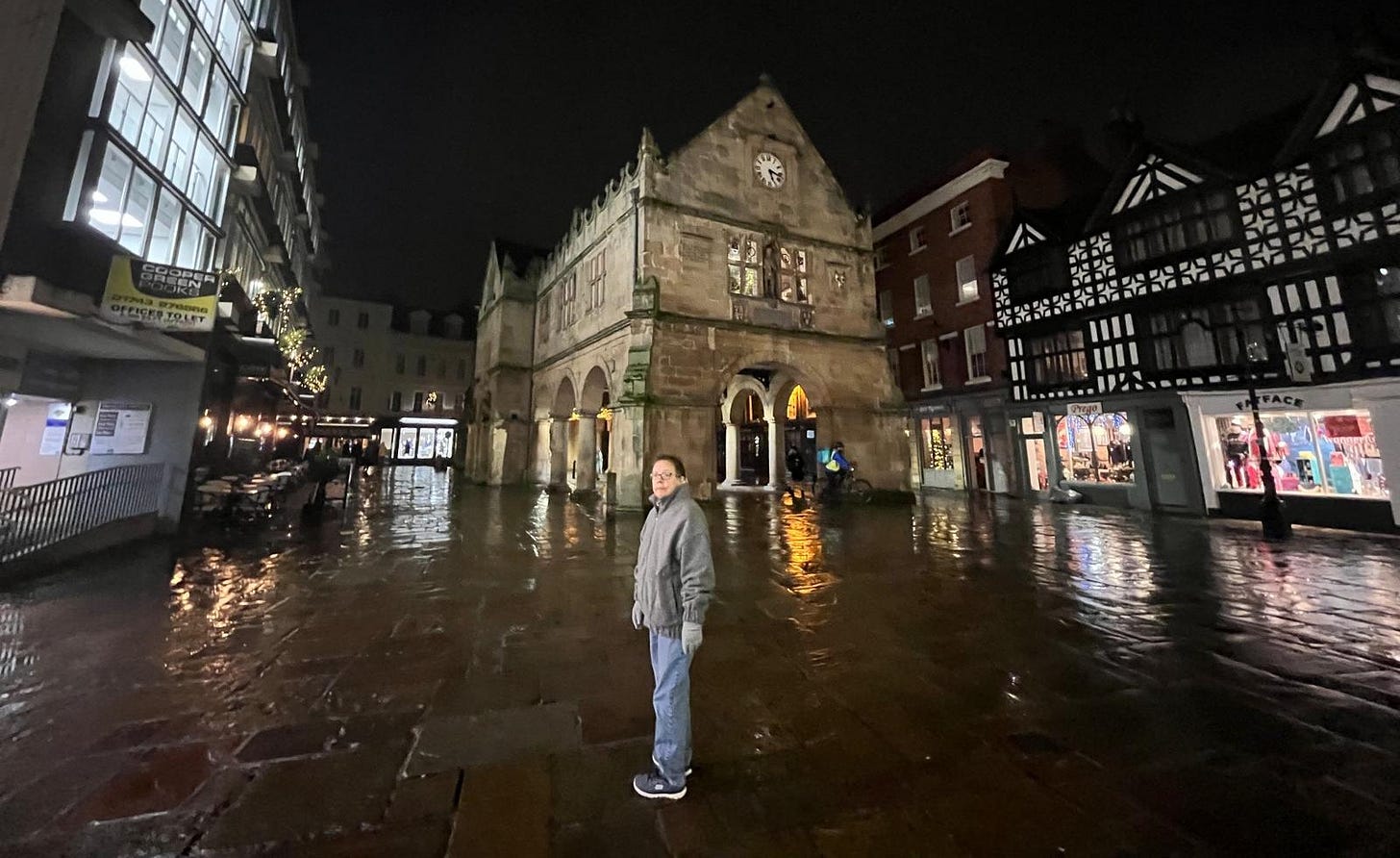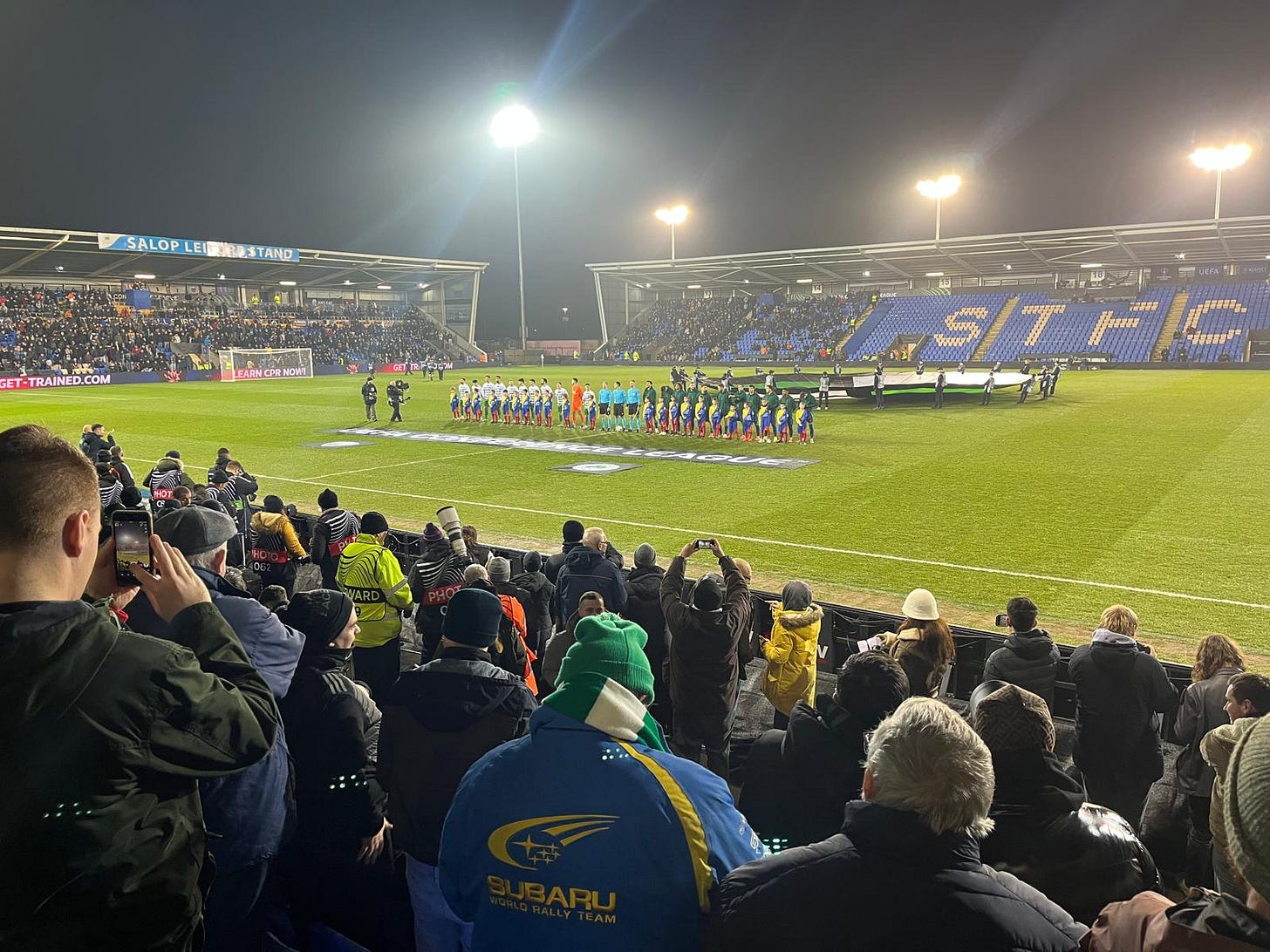
As an academic focussed on football culture, I am fortunate enough to frequently travel to games for research. Whilst at matches, I use a classical academic method to gather data: ethnography. Ethnography is the observation of people in their own environment to understand their experiences, perspectives and everyday practices, and can give huge insights into specific communities and cultures. The crucial element that makes ethnography work is the taking of ‘field notes’ – a written record of observations taken during my time at the game.
For 3 years, I have been attending matches and recording observations in a fieldwork diary. Whilst some of the data makes it into my academic publications, most of it is sat dormant between the covers of my diary. That is about to change.
“Field Notes” is a new series in which I will use my ethnographic observations at stadiums around the UK and beyond as the basis for some long-read articles. This isn’t about giving a journalistic account of the matches I’m watching but using my notes as the basis to give some cultural observations about the unique supporter communities and football heritage I come across on my travels.
First up, I’m taking a trip an hour across the midlands to Shrewsbury, where The New Saints have attracted a rag tag crowd of groundhoppers and Greek ultras as their European adventure continues…
As I trudge across to Croud Meadow, mist is dancing across the River Severn. It’s a chilly, hazy evening in Shrewsbury and the rhythmic sound of beating drums and chanting is floating across the railway tracks. The Greeks are in town.
As a result of UEFA’s strict stadium regulations, Welsh champions The New Saints are playing their home games away from their native Oswestry. That means as they continue their unexpected journey through the Europa Conference League, Shrewsbury Town’s unassuming League One stadium has been providing a stage for some European football’s most recognisable clubs.
Already this autumn Croud Meadow has played host to FC Astana of Kazakhstan and Djurgården of Stockholm. The latter of these fixtures saw Shrewsbury over-run by a huge touring party of 2,000 Swedish supporters. Having seen the many headlines generated by this unexpected Nordic footballing incursion onto English soil, I’ve decided to make the hour long journey to Shropshire and get a taste for what happens when a European footballing giant descends onto a sleepy English county town.
A Greek Invasion
The early evening is spent gadding about Shrewsbury town centre, drinking in the many ancient pubs and excitedly seeking out the prophesised gathering of Greek ultras in market square. There’s nothing doing – much to the relief of the shop owners and local business owners who are still scarred from the visiting hordes of Swedes two weeks previously. Perhaps this isn’t going to be the party atmosphere we suspected…
Upon arriving at Croud Meadow, it becomes clear that though The New Saints are the home team, this game may as well be being played at the Athenian Olympic Stadium. Not only are Panathinaikos backed by a bouncing band of 900 away fans behind the goal, but nearly all of the ground’s neutral section is taken up by excitable gaggles of Greeks clad in green and white scarves. The subsequently attendance of 6,000 is over 26x the average home gate for a TNS game.
Seeing as Panathinaikos are bona fide giants of of European football (former European Cup finalists no less) it is perhaps unsurprising that they should be so well supported anywhere they play. What is especially notable, however, is the huge number of Panathinaikos supporters who appear to be part of the UK’s 300,000 strong diasporic Greek community. My ears particularly prick up listening to the the family sat immediately behind us, who spend the majority of the game switching effortlessly between Greek and estuary-inflected English.
Much is often made of football’s ability to provide communities of fans with a strong sense of place identity. What is less studied is how supporting a football club can keep that sense of identity and connection alive for people who are away from their home. For those Greeks in attendance living away from Athens, the colour, atmosphere and sensory overload of the stadium atmosphere conjured a sense of home away from home – transporting an authentically Greek environment 3,500km away to England.
The Universal Language of Football
Given that Croud Meadow had been transformed into a Greek enclave, I was unable to understand most of the chatting around me. However, at several points throughout the evening events on the pitch prompted moments of crowd expression that transcended linguistic barriers.
The best example came in the first half when the stern Finnish referee decided to prevent the Greeks from restarting play with a quick free kick. That prompted a portly fellow several rows back to jump out of his seat and launch a barrage of expletives at the ref before miming placing a set of invisible glasses onto his face. The hilarity and eye-rolling that ensued from his compatriots was something I felt I’d seen 1000 times before in English stadia. That Greek stranger may have been speaking a different tongue, but his rage at an interfering official truly transcended linguistic barriers. It was a moment that crystallised the idea that there are some gestures, behaviours and acts that are so embedded in football culture that they form a sort of cross-cultural muscle memory.
The 12th Man?
Amidst the green and white scarves in the Roland Wycherley Stand sat a few locals. These were groundhoppers and football enthusiasts who had come to Shropshire out of sheer curiosity - myself amongst them. After all, this was a fixture between two clubs at opposite ends of the footballing spectrum. Whilst Panathinaikos were reaching European finals in the 1970s, TNS were still playing amateur village football in Llansantffraid.
However, beyond the sheer novelty of the fixture, there was one element of the night that will live long in my memory: my exposure to a completely unique football supporting culture.
To the English footballing mind – there were two remarkable aspects of the Panathinaikos supporters’ display. One was the incredible visuality they brought to the occasion. The fans in the away end banded together clad all in black, dotted with flashes of green and white, unfurling scarves and huge flags adorned in various messages. Of particular note were the flags painted in English – such as the huge “Away Days” banner adorned with the National Rail logo, which had seemingly been prepared specifically for an English audience. The second was the unrelenting constancy of the noise they created. For the full 90 minutes, the Greeks behind the goal was bouncing, chanting, waving without cease. It was loud, it was relentless, it was guttural - as you can see below.
During the first half, a bemused English fan near me leaned over to his friend and remarked how the away fans “didn’t seem to be watching the game or supporting their team”. To me, that seemed like a wilful and patronising misunderstanding of the dynamics of Greek supporting culture. I would contend that Panathinaikos supporters don’t see their role to respond to the action on the pitch, but relentlessly drive it on. The creation of a constant noise and rhythm bubbling under the surface propelled the game like an engine, providing the game with a sense of momentum and carnival atmosphere that would likely have been missing were TNS playing an English team.
This seemingly marks the difference between English and Greek cultures of football support. If English football fans attend games to get close to and bask in the action, the Greeks see themselves as the action.
These notes were taken directly from my fieldwork diary and written after my visit to Croud Meadow to watch TNS 0-2 Panathinaikos on 12/12/24.







